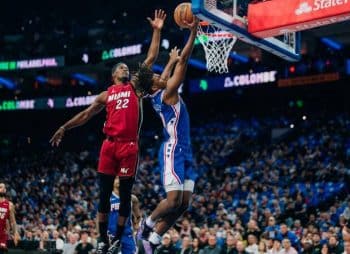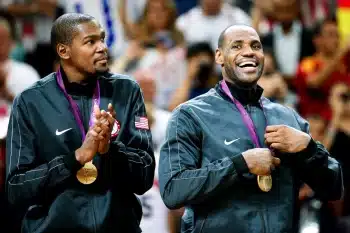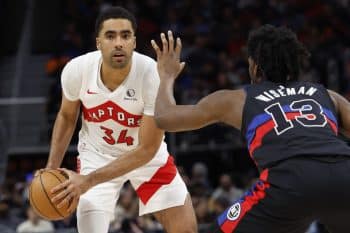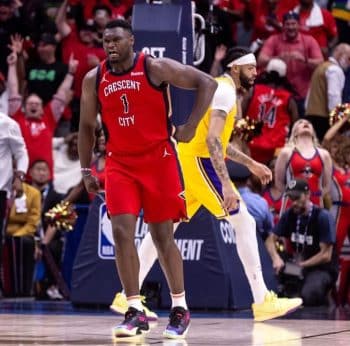NBA
NBA Daily: The Resurgence Of Derrick Rose
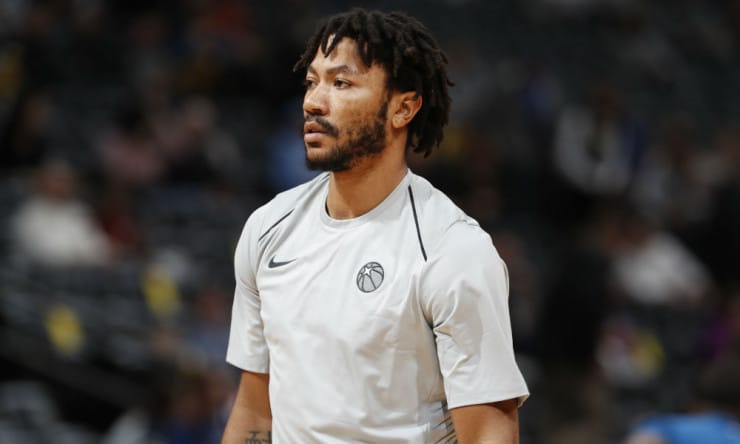
In the long run, it could really go either way in regards to who was the winner of the Jimmy Butler trade.
Philadelphia got an All-Star still in his prime who could potentially vault the franchise to the top of the east, but it could backfire if Butler takes his business elsewhere this summer.
Minnesota got solid young veterans in Dario Saric and Robert Covington who could complement Karl-Anthony Towns and Andrew Wiggins very well for the future, but they may never come close to leaving the same impact as Butler.
As odd as it sounds, the biggest winner from the Jimmy Butler trade could very well be Derrick Rose.
With Butler gone, and, with neither Saric and Covington being known for their scoring abilities, someone else has to take the scoring load. Towns and Wiggins will shoulder most of that responsibility, and Jeff Teague is a respectable scorer. However, with 17 games in the books this season, it goes without saying that Rose has indisputably been one of Minnesota’s most efficient scorers.
Just look at his stats. In fourteen games, Rose has averaged 19 points on 46 percent shooting in 30 minutes. He put up similar statistics in New York, but there are two really telling statistics that demonstrate that Rose is different this year.
The first is his effective field goal percentage. Coming into the season, the highest eFG% Rose has ever put up is 49.5 percent, which he put up his sophomore season. In the seasons following all the injuries he endured – which starts with 2014-15 – Rose never put up an eFG% higher than 45 percent. This season, it’s gone up to almost 52 percent, stemming from his second most telling statistic.
That would be his dramatically improved three-point shooting. Rose, who has never been a revered three-point shooter, is shooting a scorching 47 percent from distance, by far his best as a pro. Could that number stem from a limited sample size? Not at all. Rose is averaging 3.6 three-point attempts per game, which is the most he’s shot on average since 2015.
Now that the Jimmy Butler soap opera has ended, Rose has the opportunity to capitalize and prove that his impressive numbers are no fluke. However, this is about more than just this new version of Derrick Rose filling in for the departed Butler.
Because Rose hasn’t just been one of Minnesota’s best scorers. According to net rating, the former MVP has been one of their best players.
Going by basic advanced metrics, Rose has a very solid individual offensive rating – 113 – but his defensive rating – 118 – is pretty dreadful. That, however, may be attributed to the Timberwolves ranking no. 14 in offensive rating – 109.6 – while also ranking no. 27 in defensive rating – 113.5.
Besides, other metrics show that the Timberwolves actually play much better when Rose is on the floor.
When Rose is on the floor, he has a net rating of +18.2, which is by far the highest on the Timberwolves. This stems primarily from the offensive side of the ball, where Minnesota is +16.7 with Rose. Even the defense is better with Rose on the floor too, as the Timberwolves allow 1.5 points less per 100 possessions when he’s on the floor.
Much like his eFG%, Rose’s net rating has not been much to brag about since getting past his rampant injuries. In the last four seasons, Rose’s net rating has ranged from barely positive to very negative. Starting with 2014-15, this has been Rose’s net rating with the teams he has been on.
2014-2015 with Chicago: +1.6
2015-2016 with Chicago: -5.0
2016-2017 with New York: -0.7
2017-2018 with Cleveland: -7.9
2018 with Minnesota: -5.1
Seeing that his net rating has skyrocketed compared to what it has been in previous years, it shows that Rose is not only playing better, but he’s also making his team better.
Other metrics prove this too. Going by net-rating, Minnesota’s four positive five-man lineups that have played a minimum of 20 minutes together this season all have Rose in them.
Derrick Rose, Taj Gibson, Jimmy Butler, Karl-Anthony Towns, Josh Okogie: +24.2
Anthony Tolliver, Derrick Rose, Jimmy Butler, Gorgui Dieng, Tyus Jones: +14.4
Derrick Rose, Jeff Teague, Taj Gibson, Andrew Wiggins, Karl-Anthony Towns: +7.5
Derrick Rose, Taj Gibson, Jimmy Butler, Andrew Wiggins, Karl-Anthony Towns: +2.6
It will be interesting to see how those lineups will look now that Butler is gone since he is in three of those four lineups as well, but look specifically at the one that doesn’t have Butler. That lineup basically has Minnesota’s starters with Rose in for Butler. What’s the net rating with those five when you substitute Butler for Rose? -13.3.
It goes even further with the T-Wolves’ two-man lineups. Every core player on that squad – with the exception of Covington and Jones who are neutral with Rose – has a positive net rating playing next to Rose.
Rose and Towns: +6.2
Rose and Wiggins: +7.9
Rose and Gibson: +3.2
Rose and Teague: +1.2
Rose and Dieng: +5.0
Rose and Saric: +4.3
Rose and Tolliver: +3.3
Rose and Okogie: +6.3
That may beg the question as to why head coach Tom Thibodeau starts Teague over Rose, but that’s not the point of all of this. The point is, Derrick Rose has found his stride again.
He’s not the ultra-athletic freight train of a ballplayer we saw from 2008-2012, but instead a player who, in the wake of his depleted athleticism, has refined his game to re-establish himself as a valuable player in the NBA. Saying all of that makes it even more unfathomable that the man is somehow only 30 years old.
The last time we saw a comeback like this was with Grant Hill, a Hall-of-Famer whose persistent injuries also cut his prime short much like Rose. Hill may have never regained his MVP candidate-form when he got past his foot issues, but he re-molded his game so that he could still be a valuable player on a good team. Even if it’s only been 17 games in, Rose appears to now be following in Hill’s footsteps.
Circa 2011, Derrick Rose was the new face of the NBA. Winning the MVP at 22 years old, signified that he was the future of professional basketball. In the eight years that have passed since then, tragedy struck again and again which ultimately led to him becoming a forgotten man.
Hoping that he’d return to that same player from eight years ago would be foolish now because those days are gone. Hoping that he’d be an All-Star with a league loaded with talented point guards isn’t wise either.
The hope for Derrick Rose at this point in time is that he’d find relevance again. If he keeps this up, then mission accomplished.
